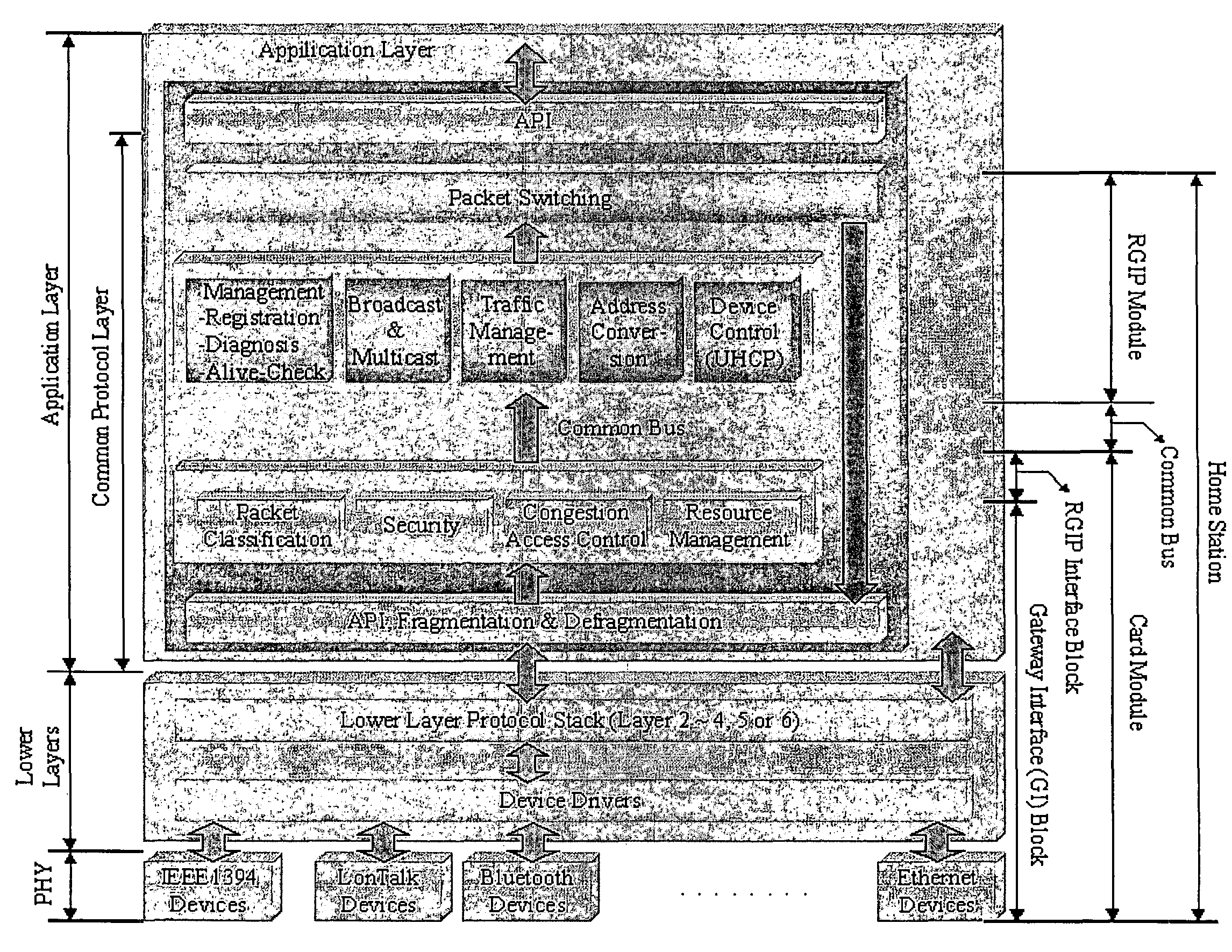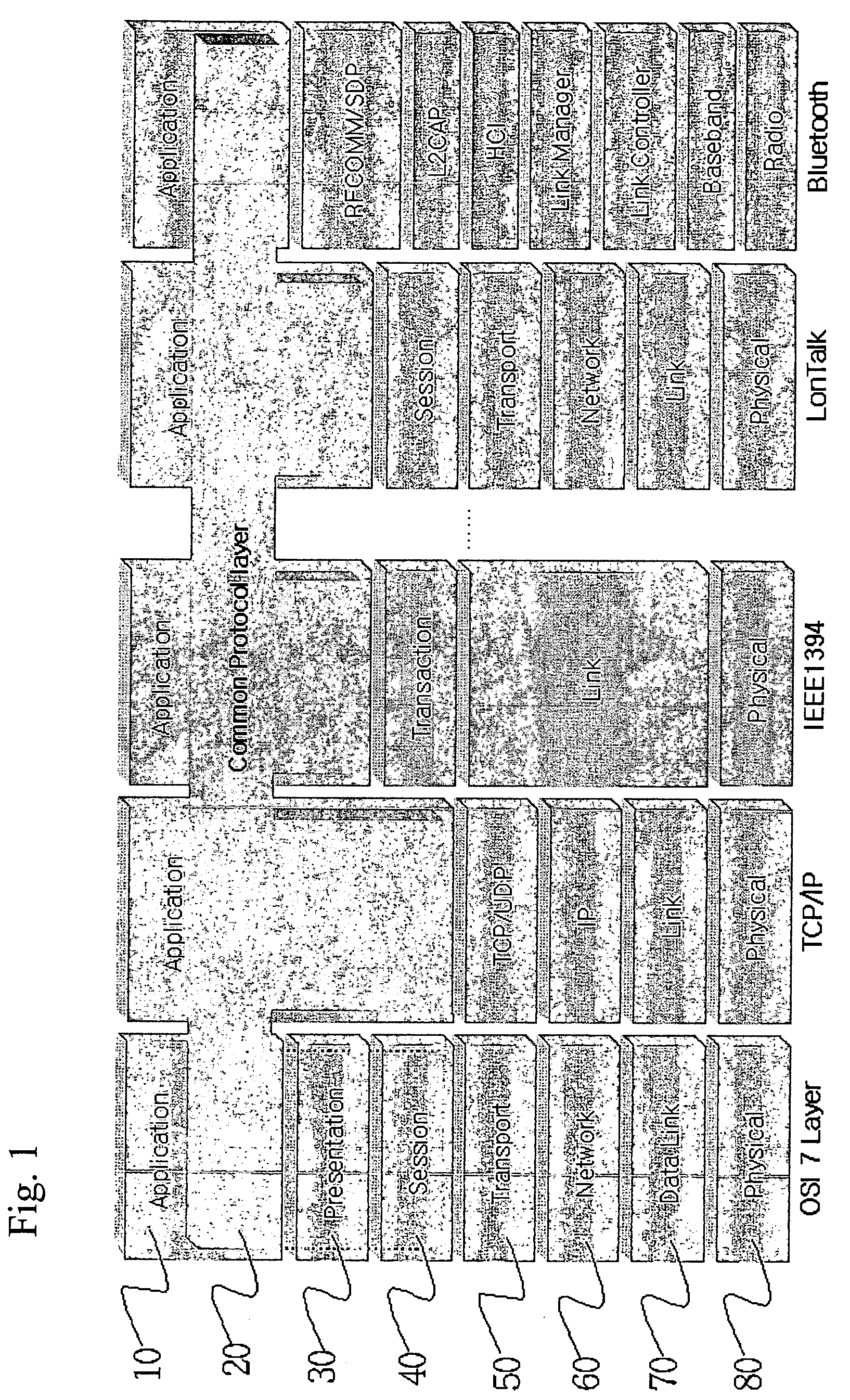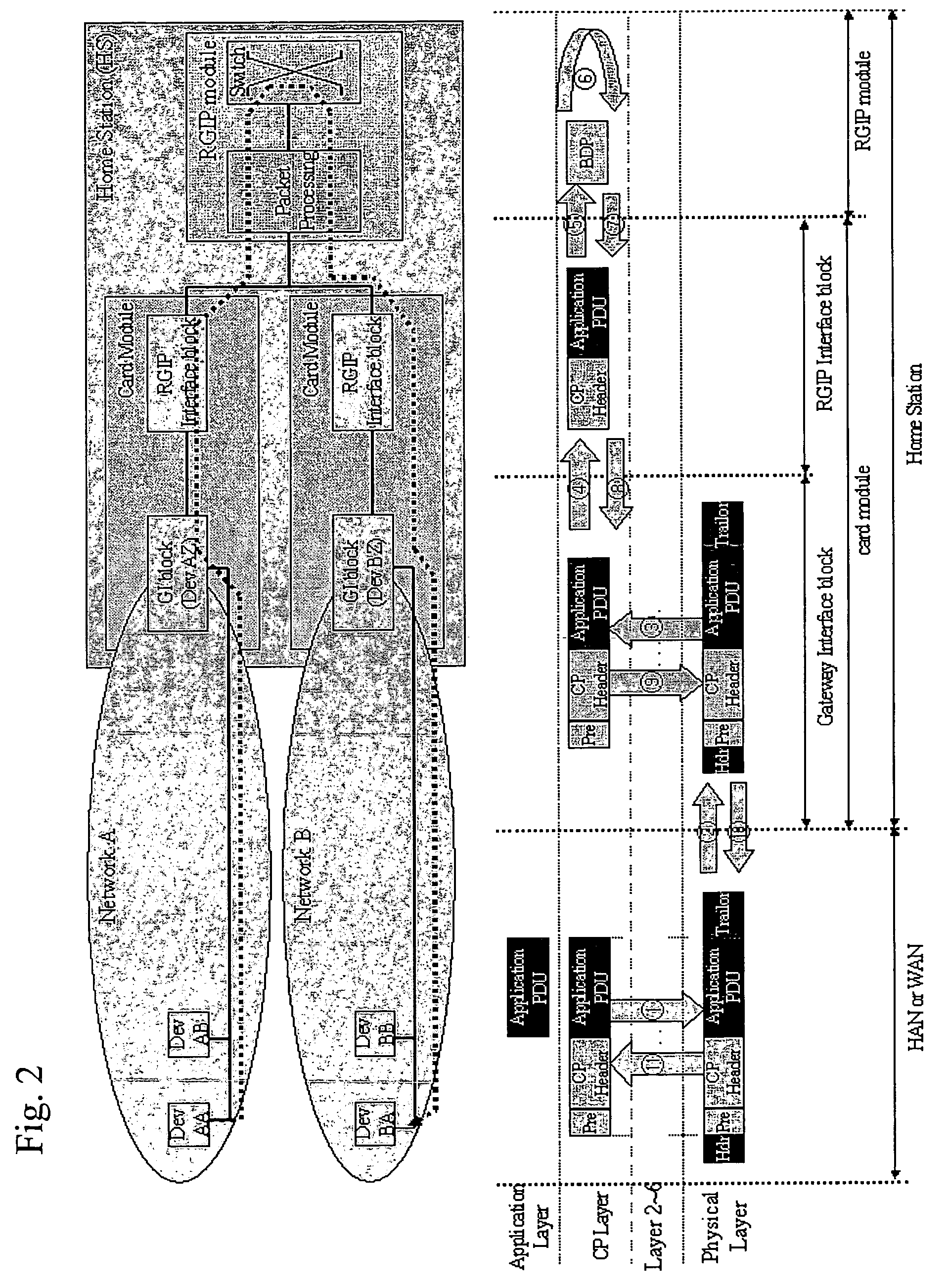Common protocol layer architecture and methods for transmitting data between different network protocols and a common protocol packet
a network protocol and protocol layer technology, applied in the direction of digital computers, wireless network protocols, instruments, etc., can solve the problems of cpu time delay generation, large loss in performance, and communication between more than two systems with different protocols
- Summary
- Abstract
- Description
- Claims
- Application Information
AI Technical Summary
Benefits of technology
Problems solved by technology
Method used
Image
Examples
Embodiment Construction
[0058]Reference will now be made in detail to the preferred embodiments of the present invention, examples of which are illustrated in the accompanying drawings.
[0059]FIG. 1 is a structure chart of common protocol layer architecture according to the present invention. In FIG. 1, a common protocol layer (20) may be positioned within or under an existing application layer (10). The other layers include a presentation layer (30), a session layer (40), a transport layer (50), a network layer (60), a data link layer (70), and a physical layer (80). A network protocol comprising a common protocol layer includes all network protocols based on the OSI reference model. For example, there are TCP / IP used in networks such as Internet, Intranet, or Extranet, IEEE 1394 protocol used in network communications under Linux™ operating systems, LonTalk™ protocol that embodies user-oriented system, and Bluetooth™ protocol used in wireless networks.
[0060]A method of transmitting data through network pr...
PUM
 Login to View More
Login to View More Abstract
Description
Claims
Application Information
 Login to View More
Login to View More - R&D
- Intellectual Property
- Life Sciences
- Materials
- Tech Scout
- Unparalleled Data Quality
- Higher Quality Content
- 60% Fewer Hallucinations
Browse by: Latest US Patents, China's latest patents, Technical Efficacy Thesaurus, Application Domain, Technology Topic, Popular Technical Reports.
© 2025 PatSnap. All rights reserved.Legal|Privacy policy|Modern Slavery Act Transparency Statement|Sitemap|About US| Contact US: help@patsnap.com



